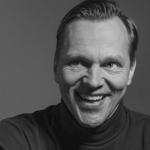A wonderful, diverse group actively participated in the Ethnography & Strategy Salon at EPIC2015 in São Paulo, and we’d like to share some of that experience with you. The Brazil group took the discussion into unexpected territories (just as we hoped) and now we call on you, the extended EPIC community, to take it further.
Although diverse, we are all confronting many of the same tensions regarding how we use ethnography to drive strategy. In this sense, listening to parallel stories was useful for learning, but also reassuring (on a personal level) to hear how such challenges are widely shared. There is great value in addressing them together. By offering a summary of main themes and provoking questions from this salon, we invite you to extend our thinking.
Many of Us Are Becoming Empathetic ‘Experience Stagers’
We started the salon with Tom’s story about a project in which he took the client to the field to experience firsthand what “real people” experience. Tom’s thesis was that “to be there is to understand”: Real understanding is always embodied and having a real impact requires involving clients in the process. Choosing the right people in the client organization, therefore, is of utmost importance.
Tom’s case led us to an interesting conversation about the disappearing boundaries between clients, researchers, and respondents. Working together with the client in a team that has a shared goal seems to be the dominant trend. Many of us felt that through the process of engaging our clients in fieldwork, we are becoming the event organizers of empathetic experiences. Thinking about our work in this way opens up both opportunities to develop more fluid and authentic staging techniques, as well as problems about the inherent blind spots that arise when an experience is ‘organized’.
Provocation: Will an increasing focus on client engagement and impact eventually sacrifice the quality of our research?
Trust is Everything
Taking the client to the field requires a relationship of mutual trust. Having a client that does not trust the consultant (internal or external) was described by one participant as a “massive pain in the ass.” There can also be lack of trust towards client organizations. But someone else suggested that, if we’re not careful, the EPIC community could even strengthen the division between “us” versus “them.” Practitioners should also extend trust to their corporate counterparts and avoid creating distinct categories of people and expertise.
Provocation: Can we take our community forward without creating/recreating an “other” category of experts?
At the end of the day there’s no single ‘silver bullet’…
There’s still a need for artifacts, frameworks, PPTs, and a deep understanding of how businesses actually work. The latter part of the salon focused on ways in which we achieve results. There really isn’t only one way to deliver results, and one of the essential competencies of an experienced practitioner is to identify the right way to deliver them in different work contexts.
There are multiple ways to translate research into strategic impact. As mentioned earlier, joint fieldwork and co-creations sessions in translation have proven to be good, but there are other approaches that work well. One cannot apply the same way of working in every situation (we all agreed) and while both frameworks/models and video/media can sometimes ‘take over’(or overshadow) the potential strategic impact of other ethnographic insights, these tools are essential even while they must be balanced with other elements of strategy.
…but a preferred ‘toolkit’ of options
We heard many stories about the importance of artifacts and frameworks in creating impact, and according to one participant, we need to deploy a focused range of:
- Artifacts to remember
- Frameworks to operationalize
- Videos and personal experiences to show
Provocation: Are we disciplined enough to choose the right ‘tool’ for the job?; or do many of us prefer to use “our” own favorite tools or frameworks over those that may work hardest for the stakeholders in question?
Common Ground
The Ethnography & Strategy Salon group agreed that making impact is about defining what ‘sticks’ in a particular context, plus understanding how to empower your client (within their organization). To do this, we must understand our clients—and their culture—at least as well as our formal research subjects. This includes (among other things) how people in their organization are compensated and how their structure of incentives may be leveraged to drive change. When our recommendations take this into account, the road to strategy opens up and the power of ethnography grows by an order of magnitude.
Concluding Questions
Finally, we discussed the potential tensions that arise between ethnography and strategy. We normally treat these disciplines as seamlessly flowing into each other, and believe our job is to bridge the gap between what clients think their customers want, and what their customers’ “real” needs are (under the assumption that creating products and offerings that have a better “fit” will always create more value). Sometimes, however, there might be strategic reasons (eg, cost structures) this may not be the case. Elevating ethnography into strategy will inevitably require more thinking about the cases when such tensions arise, as well as how we can mobilize our tools as social scientists and business strategists to tackle them.
Provocation: Do we believe that as practitioners we can show as much empathy (and insight) into the world of our clients as we do into the world of ‘users’, ‘customers’, or “everyday people” in order to develop such strategic outcomes?
Looking forward to seeing everyone in Minneapolis next year!
Kind regards,
Johannes & Tom



0 Comments